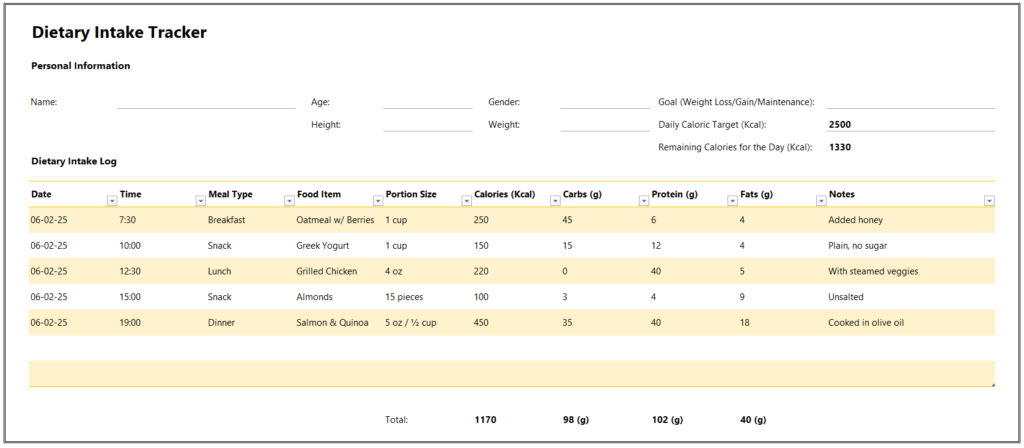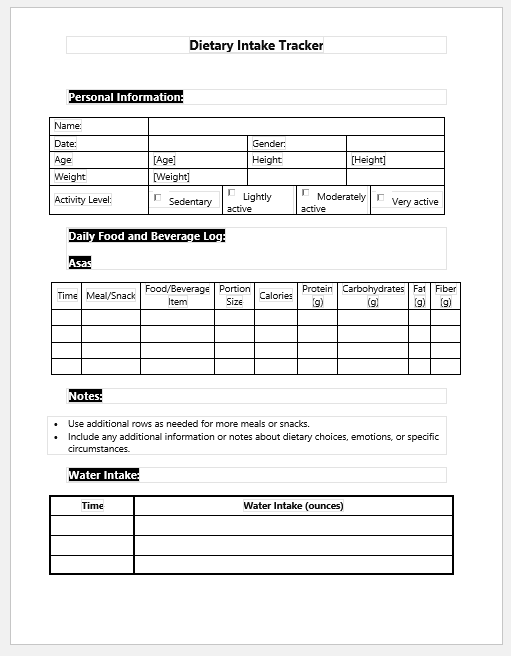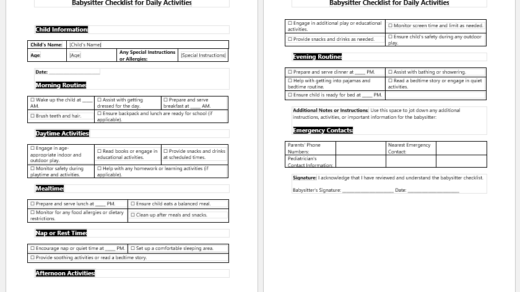They say food is our common ground and a universal experience. Isn’t that quite true? Food is the foundation of life for some who live on this earth for the sake of food. We are not here to mock such people; we are just admiring how true their concepts of life are.
It is food that gives us energy to move about and gives motivation to a father or a mother to go out and earn for their kids. And again, it is food that, if not taken properly or sufficiently, or if taken too much and in an unhealthy manner, results in us getting deteriorated and sick.
Those individuals who love food but love their life and health always keep moderation as a rule of thumb and enjoy health, food, and life all at once.
How can one achieve a balance in dietary intake?
Tracking your food is the answer. This is the most effective way to keep a check on your dietary habits. What you eat and how much you eat conveniently come under control by simply keeping a record.
We all know that the required quantity of food and the percentage of nutrients are different for different age groups, and those requirements must be fulfilled daily. A child needs a different quantity of carbohydrates than an adult, and ultimately, the source of their carbohydrates becomes different.
Similarly, the requirement of proteins is different for an elderly man than an adult, and he should stick to what his body demands. Providing too much or too little to your body always has implications, and most of the time, if not taken care of, it results in serious diseases and morbidities that affect the quality of life badly.

Description of dietary intake tracker
Many forms of dietary intake trackers are available, and most of them are quite precise. The only thing one needs to do is fill it regularly.
A dietary intake tracker can be used on a normal, healthy person as well as on a sick, debilitating person as well.
It is also used to keep a record of undernourished children whose clinical symptoms show an association with dietary irregularities.
Introduction
The chart starts with the introduction of the person whose dietary intake chart is going to be maintained. His name, age, gender, and medical record number, if it is a patient with serious nutritional deficiencies, are to be filled out by a health professional. An email address and contact number, along with a postal address, are also required for follow-up.
Food components
A column is dedicated to all the food items that must be taken at least once a day or once a week. The routine of the patient is noted in the tracker.
Quantity of food
Most important is noting down the number of food items taken per meal or day. This gives us a better idea of what a person is taking—too much or too little—and what is causing the deficiency of certain nutrients.

The Dietary Intake Tracker for Word includes sections for personal information, a daily food and beverages log, and water intake to monitor overall nutrition and hydration.
Tracker File: 46 KB
- Diabetes Travel Letter
- Persmission Letter for Eatables in Office due to Diabetes
- Diabetes Letter to Employer
- Trackers for Medical Facilities
- Nursing Documentation Templates
- Letters for being Unfit to Travel
- Mental Health Evaluation Forms
- Forms Used by Pediatricians
- Various Forms Related to Pregnancy Verification
- Common Forms Used by ENT Specialists
- Patient Registration Confirmation Messages
- Quotation Letter for Medical Services
- Mental Health Letter by Doctor
- Excuse Letter for Absence due to Medical Checkup
- Response Letter to Feedback on Improvement in Hospital
- Letter to a Mother Who Miscarried
- Patient Feedback Letter Complaining on Issues or Incidents
- Letter to Family about Miscarriage


